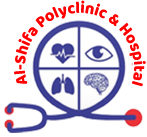The creation of aberrant haemoglobin, which results in the degeneration of red blood cells and anaemia, is the hallmark of thalassemia, a genetic blood condition. It is inherited in an autosomal recessive fashion, which means that for the illness to appear, a faulty gene must be passed down from both parents.
Types of Thalassemia
Alpha Thalassemia
Alpha-globin gene mutations are the cause of this kind of thalassemia. The synthesis of alpha-globin is regulated by four genes, two of which are located on chromosome 16. The severity of alpha thalassemia varies according to the number of these genes impacted:
- One afflicted gene: Typically asymptomatic; a silent carrier.
- The trait of alpha thalassemia: Moderate anaemia and two mutated genes.
- Haemoglobin H Disease: Anaemia ranging from moderate to severe; three genes impacted.
- Alpha Thalassemia Major (Hydrops Fetalis): All four genes are impacted by Alpha Thalassemia Major (Hydrops Fetalis), a severe illness that is frequently deadly prior to or soon after birth.
Beta Thalassemia
Mutations in the beta-globin genes found on chromosome 11 cause beta thalassemia. The severity of beta thalassemia can also differ:
- Beta Thalassemia Minor (Trait): One gene is impacted by beta thalassemia minor (Trait); anaemia is often mild.
- Beta Thalassemia Intermedia: Two genes are impacted by beta thalassemia intermediaria, which has less severe symptoms than major thalassemia.
- Beta Thalassemia Major (Cooley’s Anemia): Two genes are damaged with beta thalassemia major, also known as Cooley’s anaemia; the severe anaemia need frequent blood transfusions.
Risk Factors of Thalassemia
The main risk factors for thalassemia are genetic in nature and are associated with ethnicity and family history. Here’s a thorough rundown:
Risk Factors for Genetics
- Family History: The likelihood of a kid getting thalassemia is increased if one or both parents carry the gene. For a child to inherit thalassemia major, both parents must be carriers or have thalassemia in one parent.
- Genetic Mutations Inherited: Genes that make haemoglobin have mutations that lead to thalassemia. It is possible to inherit these mutations from both parents. People who have a family history of thalassemia or similar disorders are more vulnerable.
Geographic and Ethnic Risk Factors
- Ethnicity: There are several ethnic groupings where thalassemia is more prevalent:
- Mediterranean: People from Turkey, Greece, Italy, and Cyprus are included.
- Middle Eastern: Consisting of individuals from Iran, Saudi Arabia, and other Gulf nations.
- South Asian: People from Bangladesh, Sri Lanka, India, and Pakistan are considered to be South Asians.
- Southeast Asian: People from Thailand, Vietnam, Malaysia, and the Philippines are considered to be Southeast Asians.
- African: This includes those who reside in sub-Saharan Africa.
- Geographic Area: Parts of the Mediterranean, the Middle East, Southeast Asia, and some portions of Africa are among the regions where thalassemia is more common. Because the thalassemia trait can offer some protection against malaria, the prevalence of thalassemia may be higher in these areas due to historical evolutionary advantages against the disease.
Other Risk Factors
- Consanguinity: Recessive genetic illnesses, such as thalassemia, are more likely to be inherited when relatives, such as cousins, marry. Where consanguinity is prevalent, there may be an increased chance of developing thalassemia.
- Carrier Status: Although they usually do not exhibit symptoms, those who carry the thalassemia trait (one mutated gene) do not exhibit symptoms. But if the other parent is also a carrier, they can pass the gene on to their offspring, raising the risk.
Symptoms
Depending on the kind and severity, thalassemia symptoms can vary, but often include:
- Anaemia can cause pallor, weakness, exhaustion, and dyspnea.
- Organ Enlargement: hepatomegaly and splenomegaly.
- Bone abnormalities: In more severe cases, thinning of the bones and facial abnormalities.
- Slow Growth: Particularly in kids with severe cases.
- Jaundice: An accelerated rate of red blood cell disintegration resulting in yellowing of the skin and eyes.
- Frequent blood transfusions can result in iron overload, which can cause complications like diabetes, heart disease, and liver issues.
Diagnosis
Thalassemia diagnosis entails:
- Haemoglobin electrophoresis, peripheral blood smear, and complete blood count (CBC) are blood tests used to measure haemoglobin types and red blood cell shape.
- Genetic testing: To find certain globin gene mutations.
Treatment
The kind and degree of thalassemia determine the available treatment options:
- Frequent Blood Transfusions: To keep haemoglobin levels adequate and control severe anaemia.
- Iron Chelation Therapy: To avoid iron overload from recurrent transfusions, use iron chelation therapy.
- Supplemental folic acid: To aid in the formation of red blood cells.
- Bone Marrow Transplant: A bone marrow transplant may be able to treat some patients, particularly those who have significant beta thalassemia.
- Gene Therapy: Gene therapy is a new therapeutic modality that is being studied.
Management
A comprehensive strategy is needed to manage thalassemia, which includes supportive care to enhance quality of life, monitoring for problems, and routine medical check-ups. For the best care, patients frequently need a multidisciplinary team of medical professionals.
Prevention
Testing for carriers and receiving genetic counselling can help stop the spread of thalassemia. To determine their chance of passing on the condition to their offspring, couples intending to become parents can get tested genetically.
Because thalassemia is a complicated ailment, research is still being done to further our knowledge of it and our possibilities for treating it.
Conclusion
Anaemia and the lysis of red blood cells are the results of thalassemia, a genetic blood condition characterised by the synthesis of aberrant haemoglobin. The two types of thalassemia—Beta thalassemia, which ranges from mild to severe anemia—have different degrees of impact based on the number of genes that are damaged. Thalassemia is inherited in an autosomal recessive way. Consanguinity, ethnic heritage, and family history are risk factors. Blood testing and genetic analysis are used in the diagnosis process. Iron chelation, blood transfusions, bone marrow transplants, and gene therapy are among possible treatments. A multidisciplinary approach and continued medical treatment are necessary for effective therapy.
